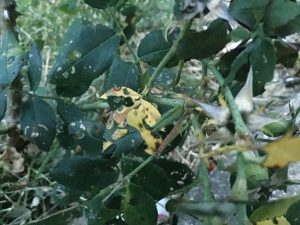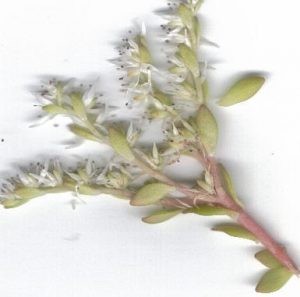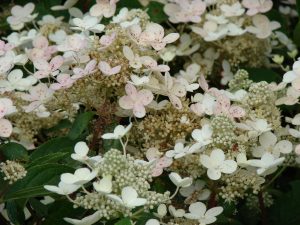Q. How can I keep the beetles away and keep the invisible insects from eating holes in my rose leaves? The beetles have not been too bad the last couple of years, but the holes in the leaves never stop. I have tried so many different kinds of insecticides but to no avail. Our soil is not too sandy, but it is not all dirt either. Drainage does not seem to be a problem as we live on a slight incline above the street and driveway. — C.L., DeMotte, Ind.
A. Although the population of insects varies from year to year, roses are nearly always victims of Japanese beetles. Several other insects also target roses, including leaf-cutter bees, rose curculio, and rose slugs. There are a number of insecticides labeled for controlling these pests, but complete avoidance of damage is not practical. In addition, some of the effective insecticides are also likely to damage bees and other beneficial insects. The best strategy includes an integrated approach of limited but well-timed insecticide applications choosing environmentally friendly options when possible and accepting some damage when pest populations are less challenging. Purdue Extension publication E-75, Japanese Beetles In The Urban Landscape,
and E-70, Flower Garden Pests, offer lots of helpful options.
Q. This is a plant growing in my sister’s yard. It was all woods that they cleared out to build, and this plant comes up near the house. She has looked in books, asked nurseries and everyone she knows, but no one seems to know anything about this particular wild plant. It comes up each year, spreads and has a lot of greenery and thick with these pretty blooms. We would like to know what it is, and its origin. —
S.C., Portland, Indiana
A. This appears to be one of the native Sedum species, most likely wild stonecrop, Sedum ternatum. This native herbaceous perennial is commonly found in wooded ravines and stream banks throughout most of eastern North America.
Q. Why does my “Invincible Spirit” hydrangea start out pink and end up a tan green? — C.R., Albion, Indiana
A. Hydrangea flower clusters are composed of both sterile and fertile flowers. The center flowers in the cluster are fertile, but not showy. The showy outer flowers in the cluster are sterile with colored sepals. These showy sepals are retained in the cluster after the other flower parts fade and drop off the plant. The sepals hold color for quite a while but do fade with time, hastened along by hot summer weather. The dried flower clusters provide seasonal interest long after other flowers fade in the garden, even through winter.


